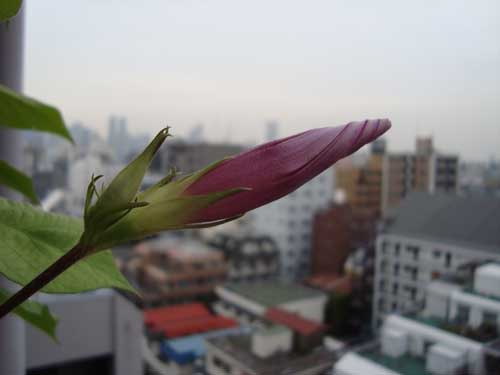
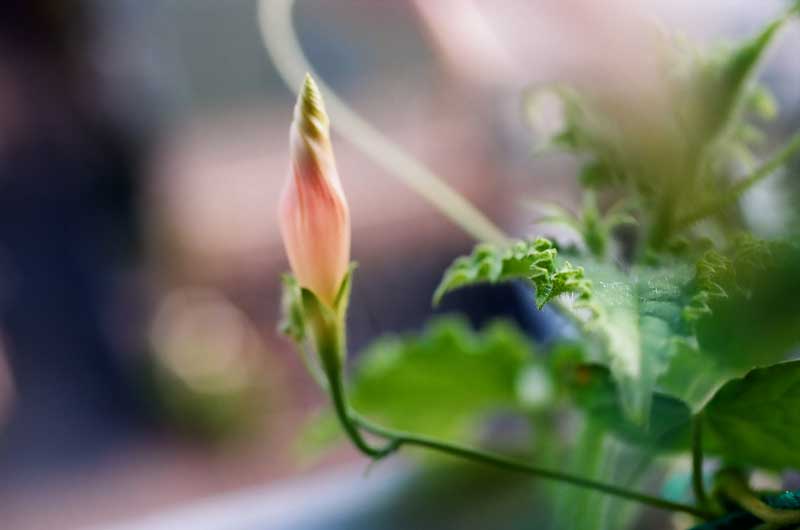
江戸アサガオのつぼみは素敵だと思います。
This Edo morning glory vine is much more delicate and slower-growing than the Okinawa one. I like how twisted and wrapped up the bud is.
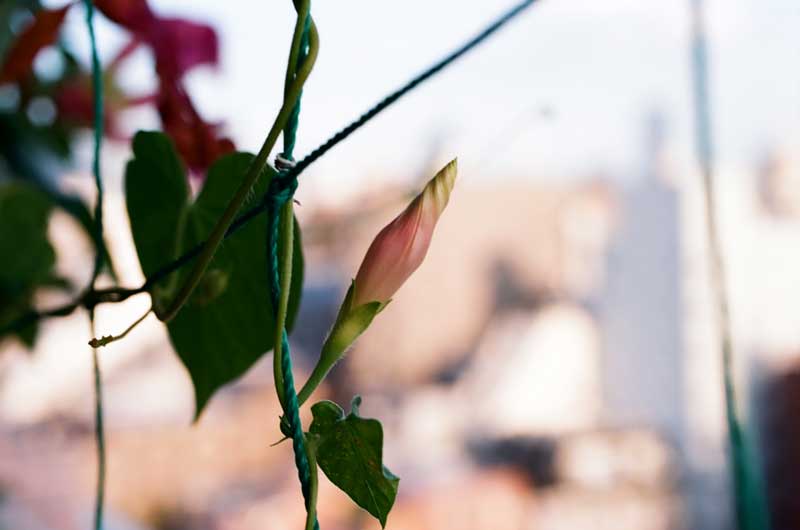
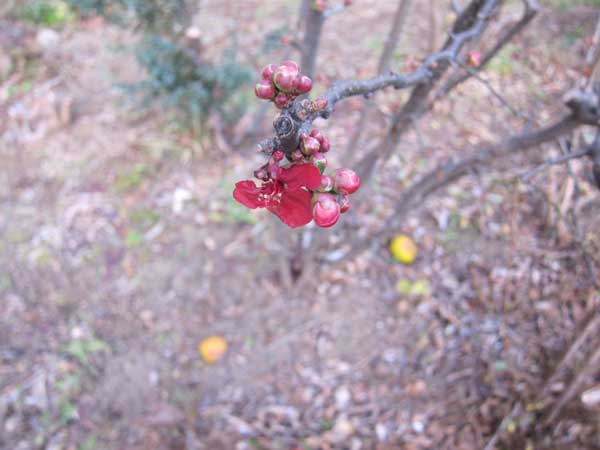
I love the deep blood red of this quince bud. Quince is called カリン (karin) in Japanese. In the background, you can see two chartreuse fruit fallen on the ground. Tokyo quince is not just decorative.
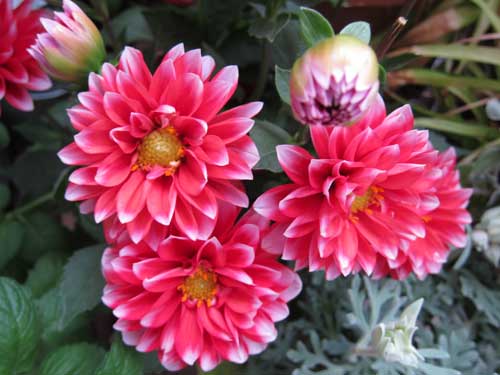
植物や花も記憶を呼び起こします。ダリアはサンフランシスコ市の花です。
Plants and especially flowers trigger memories. Recently lilacs were blooming in Tokyo, and it reminded me of childhood and my grandmother who was a garden hobbyist in Maryland. I tweeted about it, and heard from a friend about the memories she has of a lilac bush by a childhood bedroom. Seeing hostas in my in-laws’ garden reminds me of the suburban neighborhood of my childhood. Japanese maples, azaleas, rhododendrons, and anemone evoke a Tea Trade era of Anglophilic commerce and class in the United States’ Northeast and mid-Atlantic.
Dahlias remind me of San Francisco, where it is the city flower. I love the huge variety and outrageous colors. And its interesting history of being first discovered in Mexico and then bred in the Netherlands. This red and white specimen was exquisite when I bought it and for another week. The number of blooms and buds was astounding. Not surprisingly, two weeks after buying this dahlia, the remaining buds refuse to open and I wonder if the plant will live even one more month.
I bought this plant at Shimachu, a large home center. Their plants always seems pumped up for sale. Unfortunately because of the proximity to my apartment (very bike-able) and low prices, I often buy from there. It’s a guilty pleasure similar to eating fast food.
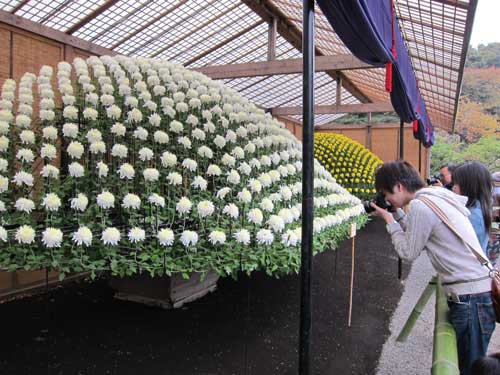
These giant chrysanthemum displays are a marvel of human manipulation of nature. Called an “ozukuri bed” (大作り花壇), this technique for pinching, pruning and training chrysanthemums (菊) originated in Shinjuku Gyoen in 1884. In the first half of November, it’s a featured display each year.
On a conceptual level, I love the orderly rows that transform nature into a skilled craft. And I know that chrysanthemums are a national symbol of Japan. Yet, however monumental and transitory, I fail to find these flowers beautiful. What do you think?
There’s another style where the chrysanthemums are trained to look like a cascading river of petals. I like how they are in special bamboo huts with blue curtains and red tassels.
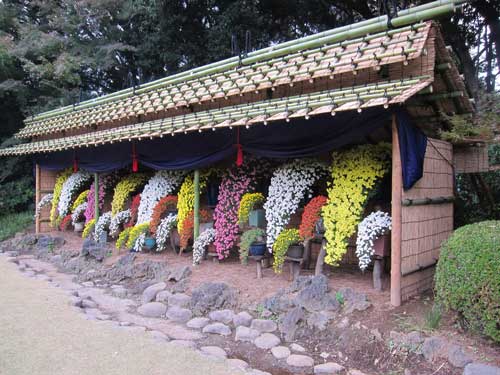

I have had the pleasure of visiting Sinajina three times in the past three weeks: to talk with Kobayashi sensei about a project with the Portland Japanese Garden, to take a class with TEDxSeeds organizers, and to visit with my Newsweek Japan editor. In every visit, the store is set up differently, and the most seasonal bonsai are most prominently displayed.
Last weekend, the rose and mountain hydrangea perfectly capture the turning of the season from late spring to early summer. These bonsai are perfect in shape, buds just opening, and contrast with pot, gravel, and moss.
I also like the contrast between these plants and the hollyhocks I featured yesterday. All of them are seasonal flowers, yet they differ in scale and degree of human care. I like to think that urban nature extends from the wild and unruly to the groomed and domesticated.
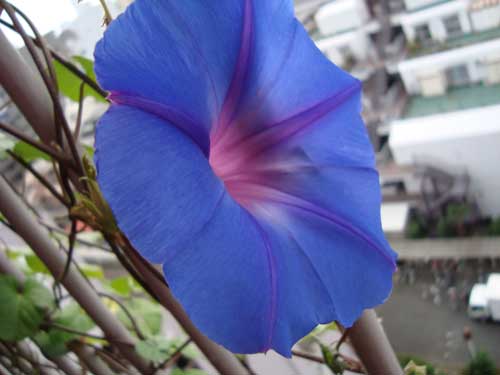
On our balcony, this Okinawa morning glory is just now flowering. All but one of the four Japanese morning glories have died back. The Okinawa morning glory is a vivid “crystal blue,” whereas the Japanese ones are variegated. The Okinawa flowers and leaves are larger, growth vigorous, and best of all the tag claims it is a perennial.
Last Wednesday was the first official day of fall, so the wind charm has been packed away. New fall flowers include fujibakama, cosmos and a “fairy white” daisy.
Here’s what the Okinawa morning glory looks like when the bud is one day from opening. The flower lasts just one day, but each bud is in a cluster of three to six, and there are many forming this month.
